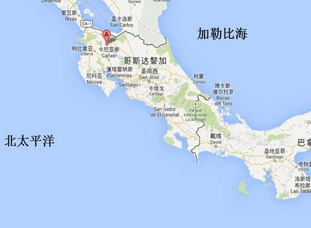Project recommendation
Contact us
tel:027-87580888
phone:18971233215
fax:027-87580883
email:didareneng@163.com
address: Inside the China University of Geosciences, 388 Lumo Road, Hongshan District, Wuhan (Wuhan)
 Projects show
Projects showRaft river Geothermal Power Station
Geographical location
There are 81 mountains, 10 rivers and over 2,000 lakes in Idaho. Raft river in southern Idoho flow through towards northeast the Raft river geothermal field where the Raft river geothermal power generation station is. The central, eastern and northeastern Idaho is where the part of the Rocky Mountains are. Borah peak is 3859 meters above sea level, which is the highest point in the state. Snake River originates in the southeastern mountains, and the formation of many canyon cuts through the northern Rockies, the famous Snake River Valley up to 1.6 kilometers deep, the deepest canyon in North America. Along a series of waterfalls, Shoshone Falls is up to 65 meters. The caldera and volcanic cone Craters of the Moon National Park near the Boise shows the desert scene. The state has a continental climate. The average annual rainfall of 510 mm in northern, southern part of 300 mm. Terrain height have a significant impact on the temperature. Lewiston is 217 meters above sea level, the annual average temperature is 11.1 ℃; Montpellier is 1828 meters above sea level, the average temperature is about 5.5 ℃. Snake River Middle Reaches average temperature is 12.8 ℃. Crop growth is ranging from 120 days to 300 days.
Geological background
The geothermal reservoir of the Raft River geothermal field is in a basin, of which the west bounds with a small angle faults boundaries, east is bounded with the Black Pine Mountains and a secondary fault. Geothermal reservoir cap is Tertiary sedimentary layer. The thickness of the basement rocks is about 1600m. At this depth, there is a linear structure to the northeast - Narrows Structure that runs through. People think this structure is produced by the base shearing action. Heat source is Precambrian adamellite. At first, people thought hydrothermal along cleavage structure coming in, and then spread throughout the sedimentary structures through other folds and faults. Now, people think there are two heat supply area, a recharge area from the northwest direction along Majing fault distribution, and the other is from the southeast, may be associated with narrowing structure.
1870s, due to the temperature of the hydrothermal that the Raft River geothermal field developed is relatively low, the local people designed a two-cycle generators. However, due to technical problems, it has been unable to put into use. So the United States Department of Energy tried to open up new areas of power generation for the Raft River Geothermal Power Station double-cycle geothermal and consumption on this project for nearly 13million dollars. The design of the two-cycle generators only run from autumn 1981 to spring of 1982, the last on June 15, 1982 to stop running. During the station stops, the geothermal wells, Geothermal Power Station equipment are off. In 2002, 20 years later, the United States Geothermal acquired the right to develop Raft River region, including five production wells before, the injection wells, testing the wells and so on. In 2002 to 2011, the United States Geothermal continued on the local geothermal drilling geothermal exploration, combined with modern high-tech to optimized dual-cycle power generation system of the Raft River geothermal power station, and begin normal operation.
The ground power system
The latest US Geothermal Raft River power station is located in the South-East to first place in the power station of approximately 600m. This latest set of energy generating convection system is a part of the regenerator, second grade, two-pressure two-cycle generating units. There are two separate units, every unit has two axial flow turbine to drive a generator with one center. A four-chamber water cooling tower shell and tube condenser to provide cooling water to provide cooling. Adding water is obtained from wells, and the need for timely treatment to maintain the cooling tower water quality. The 138℃ brine is pump to the evaporator and preheater with the speed of approximately 3.15 × 106kg / s, cycle working fluid i-C5H12 is to absorb the temperature in the evaporator and the preheater. Heat exchangers used only in high-pressure cycle.
上一篇 > Heber Geothermal Power Station
下一篇 > Miravalles










